
Until recently, when designing the IT infrastructure of a large office or an entire building, it was necessary to choose between high-speed wired data networks and convenient flexible wireless solutions, the bandwidth of which, however, was often upsetting. As soon as several dozen people gathered in one conference room with their gadgets, the Wi-Fi network became practically inoperable due to the surge in traffic. Who was at any offline industry conference will not let you lie.
With the advent of Wi-Fi 6 and SDN management software, these inconveniences are a thing of the past. The short video below demonstrates the possibilities offered by next-generation wireless campuses, using the example of one of Huawei's Chinese offices.
So, a real wireless network with continuous roaming, which includes 20 thousand devices and serves 25 thousand subscribers, is managed by only two (!) Engineers. It is deployed on the basis of the most modern technical solutions of Huawei, which will be discussed today.

Underpinning Digital Transformation 2.0
In digital transformation processes, the network becomes the link between people and IT services. In practical terms, we are talking about gadgets that are at the edge level (wearable terminals, smartphones, AR / VR devices, IoT sensors, etc.) and many ways of interacting with each other, as well as with the cloud or data center.
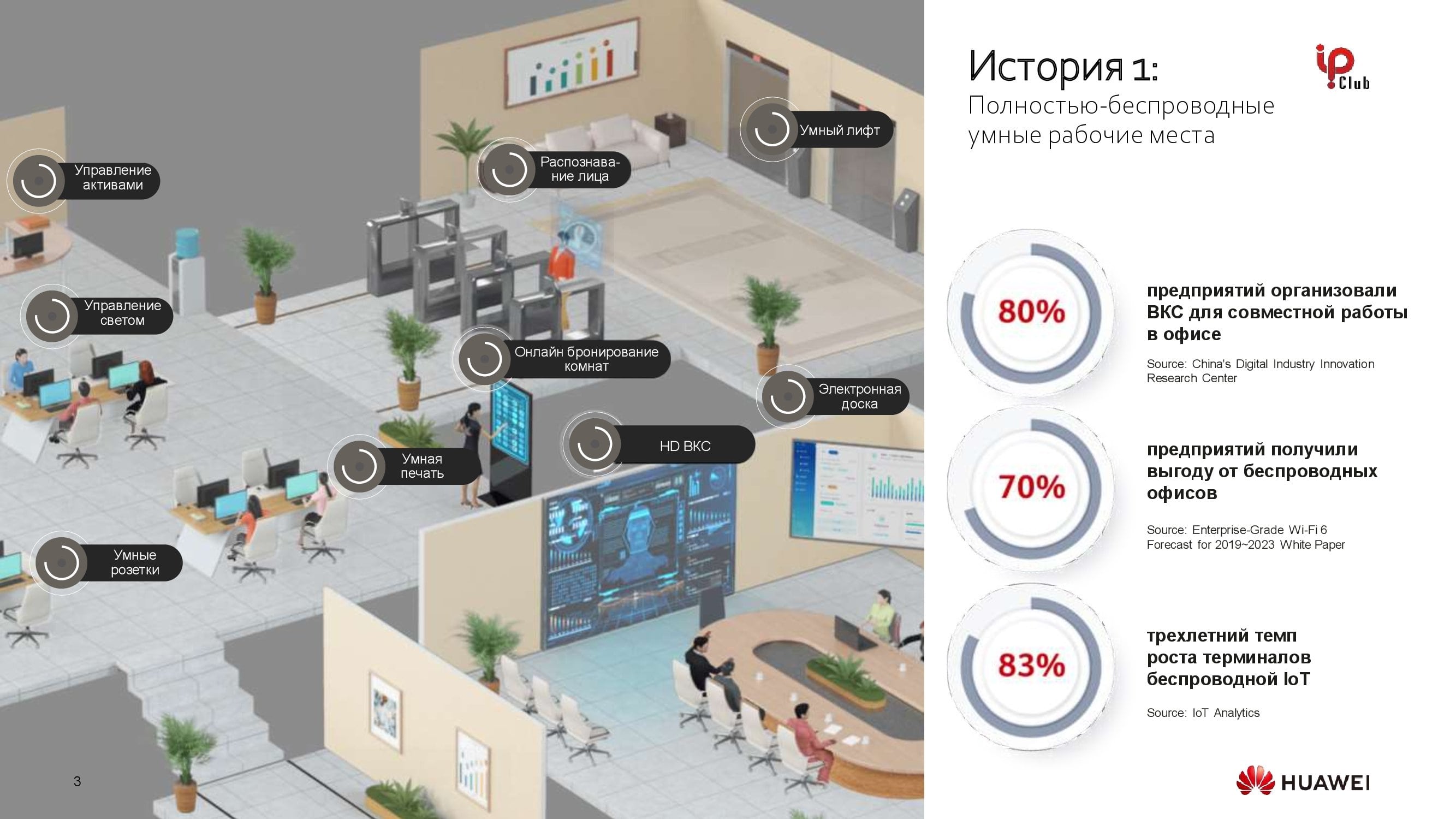
Smart workplaces without wires
For 2020 and early 2021, many have completely moved their professional activities online. And without the possibility of high-quality wireless data transmission, not least multimedia, modern campuses are meaningless.
A modern office that meets advanced requirements already includes video conferencing equipment and often does not imply fixed workplaces that would be assigned to specific employees. The employees themselves have quite adapted to this mode and work from their own laptops, tablets and smartphones, from where it is convenient for them, even from the conference room, even from a cafe on campus.
In turn, in the workspace there are more and more all kinds of devices connected to the local network: electronic boards, terminals for ordering meeting rooms, "smart" lighting systems and air conditioners, as well as other IoT elements. As a result, ever higher data transfer rates are required, moreover, “wireless”.
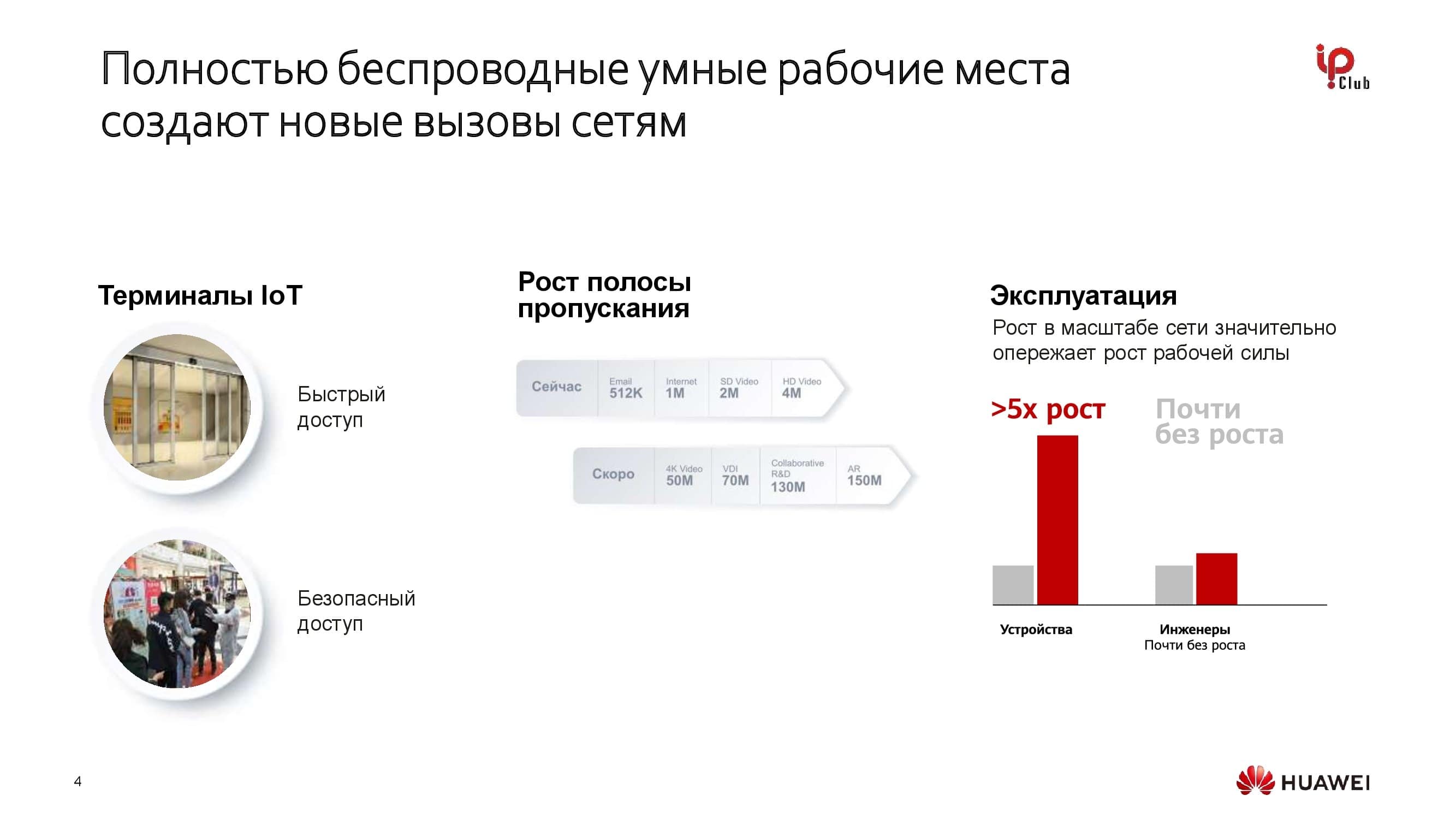
A host of companies, both large and small, are developing their proposals for integrating IoT sensor networks into existing infrastructures. All this leads to a steady increase in traffic. In the meantime, the increase in both serviced and serviced network devices is accompanied by a noticeable decrease in the number of personnel managing this network.
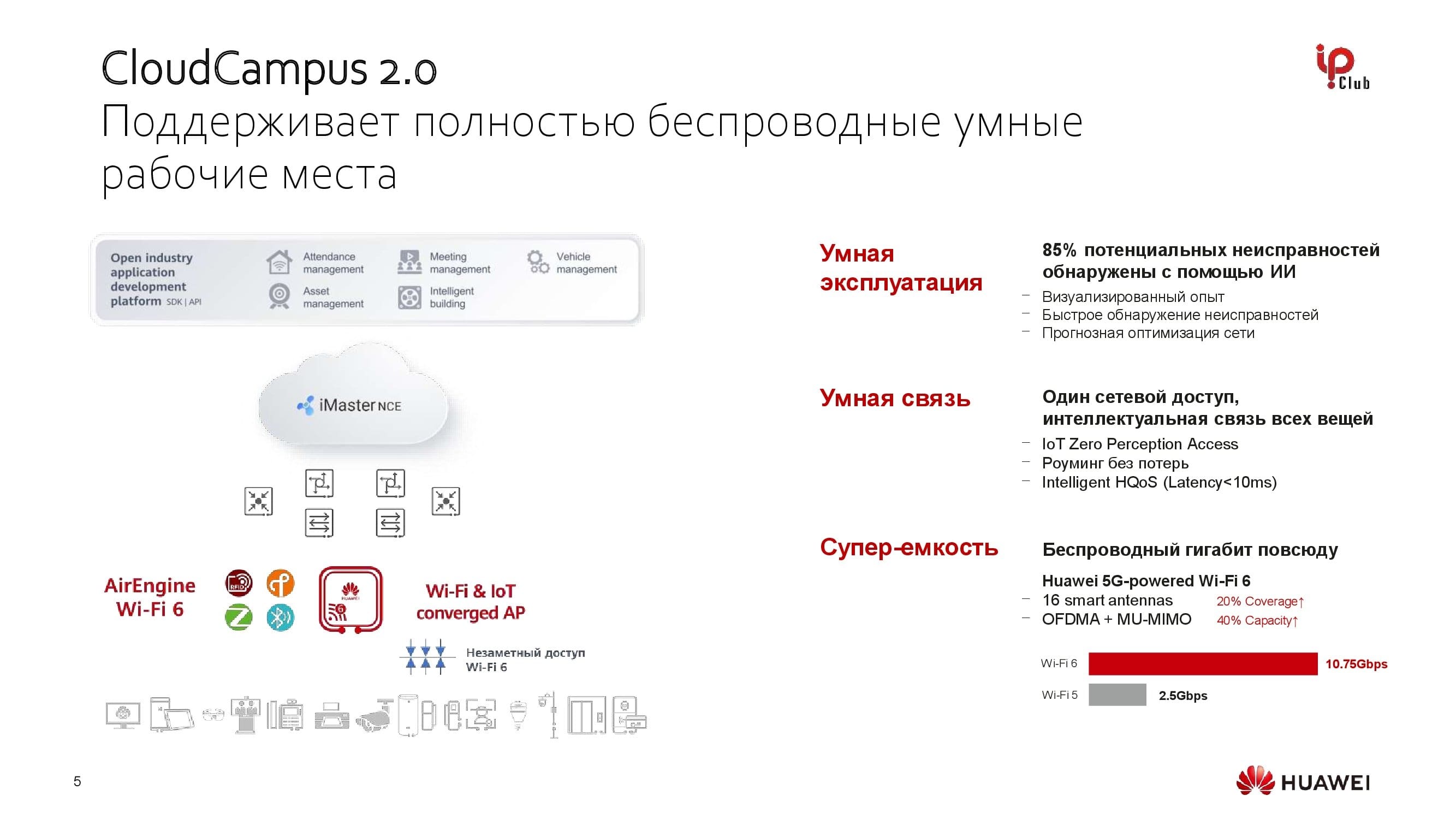
CloudCampus 2.0
Modern software helps to provide businesses with advanced network services, while effectively solving problems arising in large corporate networks. At Huawei, these products are based on the CloudCampus 2.0 concept.
CloudCampus 2.0 includes a network management and monitoring system based on the iMaster NCE SDN controller. From Zero Touch Provisioning (ZTP) to automatic fault analysis, he takes over all the work of maintaining the network . The system is built on the basis of artificial intelligence algorithms, which allows it to predict network conditions with a high probability and proactively eliminate potential points of failure.
It is also important that the iMaster NCE through the Northbound interface (NBI) is easily integrated with higher-level solutions, including those from other vendors. These can be asset management systems, time tracking, "flexible production", automated warehouse equipment, etc. Thus, the network turns into a service that can be integrated into any IT or IoT complex.
CloudCampus 2.0 capabilities are divided into three main groups.
With iMaster NCE, the network can operate in a smart operation mode that optimizes performance based on predictive analytics and AI-assisted detection of up to 85% of failures.
With the help of "Smart Communication"the network is quickly configured from a single console. The use of modern wired switches and WiFi 6 wireless access points makes it possible to build converged network access for IoT devices.
Finally, the third point can be conditionally called "supercapacity" , since this complex of capabilities implies the achievement of a throughput at the level of 10.75 Gb / s per access point.

Huawei CloudCampus 3.0 , . — AirEngine Wi-Fi 6 NetEngine AR8140, 20 / (SD-WAN). CloudCampus 3.0 .
Wi-Fi 6 « »
Modern wireless networks are increasingly used in innovative industries, where they can be integrated into robotic complexes of "flexible manufacturing".
Whereas in the past, manufactured goods were easily produced unchanged for decades, now it is not so much for success - it is often vital for the survival of a business to be able to quickly adapt to changing needs of buyers and customers. You cannot keep up with technical progress and market conditions when you do not have the opportunity to produce products in small batches and, if necessary, quickly switch to the production of other goods.
The massive use of robots and automation equipment requires the use of modern technologies, including network technologies, which would make it possible to effectively manage the production line, receive telemetric information from it and transmit commands with minimal delays and without losses.

Here is a robot for automated optical inspection of manufactured parts. It uses a set of five industrial chambers to assess the precision of component manufacturing from all angles. For the full-fledged operation of one such robot, a network channel bandwidth of at least 768 Mbit / s is required. And the number of such devices working simultaneously depends only on the scale of the enterprise.
Even when using the not-so-ancient Wi-Fi 5 technologies, a separate access point is required to operate such a robot. But there are also robots that move around the production area and are also connected to the local network. It is often impossible in principle to ensure their work with the help of wired solutions.
Even now, wireless communication of the previous generation often does not allow to reliably connect the required number of automated devices and pass the traffic flow required by each of them. At the same time, one Huawei Wi-Fi 6 access point, showing minimal latency and capable of transferring over 10 Gbps of data per second, is able to support more than a dozen optical inspection robots.
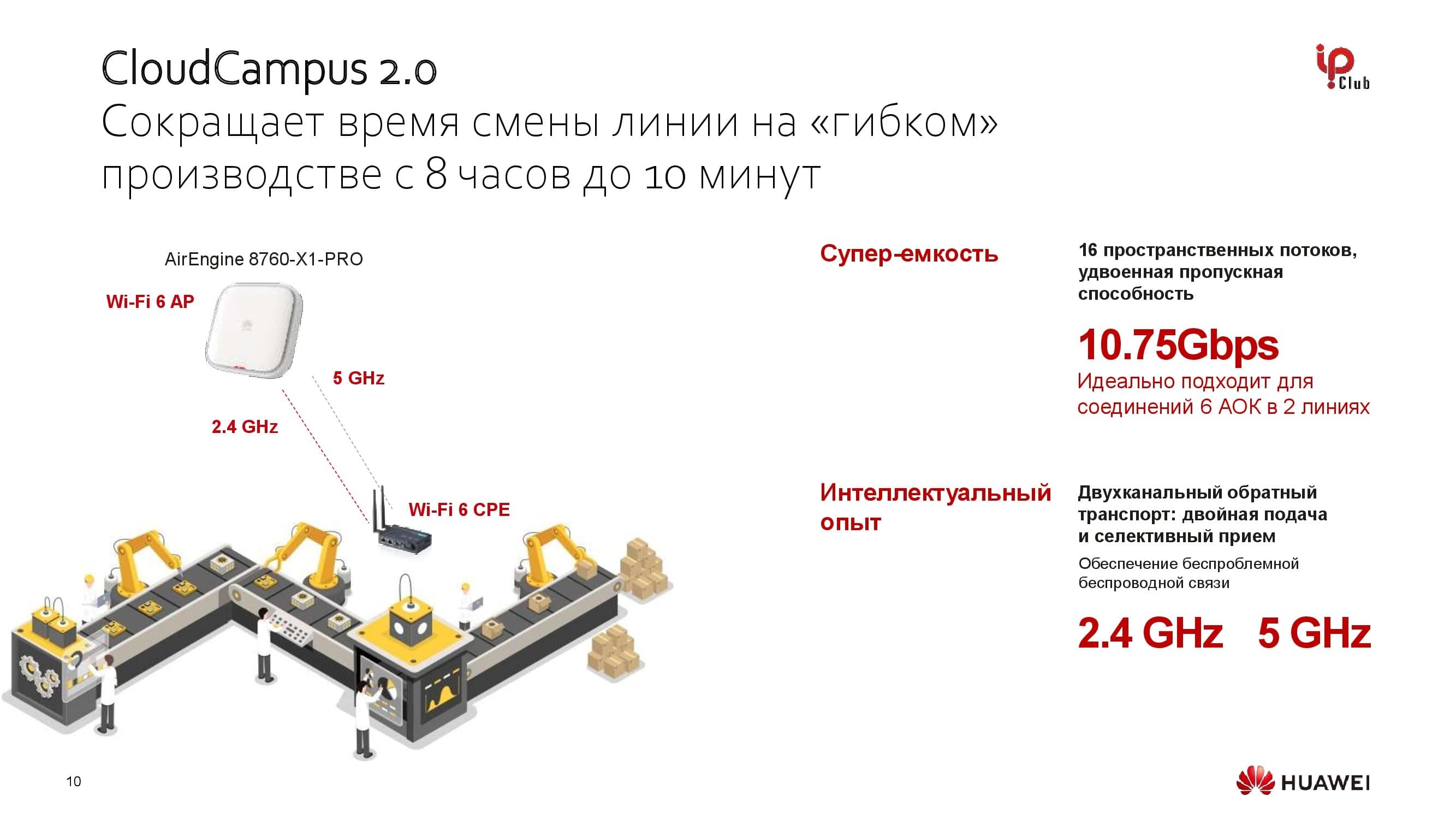
The current operating line of "flexible production" for the production of Huawei P40 smartphones has already been deployed at one of the factories of our company. A feature of the line is the frequency with which changes are made to work processes, namely, up to several times a week. This became possible only thanks to the widespread introduction of robotic systems that can quickly adapt to changing requirements. All these complexes are connected to a wireless network based on top-end AirEngine 8760-X1-PRO access points .
The flow of data from video cameras of robots towards the data center is processed using artificial intelligence algorithms, and they, in turn, draw conclusions about how well certain technological processes are performed.

70 milliseconds for VR and AR
Another trend that raises the requirements for wireless network bandwidth is the spread of virtual and augmented reality technologies, including outside the industry.
Learning will become an important growth point for VR / AR technologies in the near future, since children master complex technical solutions very well. This means that a sharp increase in demand for appropriate devices is coming, which will also require wide communication channels.
At the same time, it is obvious that content for VR / AR headsets will be hosted on servers in data centers: centralization of resources is economically expedient. This will inevitably lead to an increase in network bandwidth requirements.
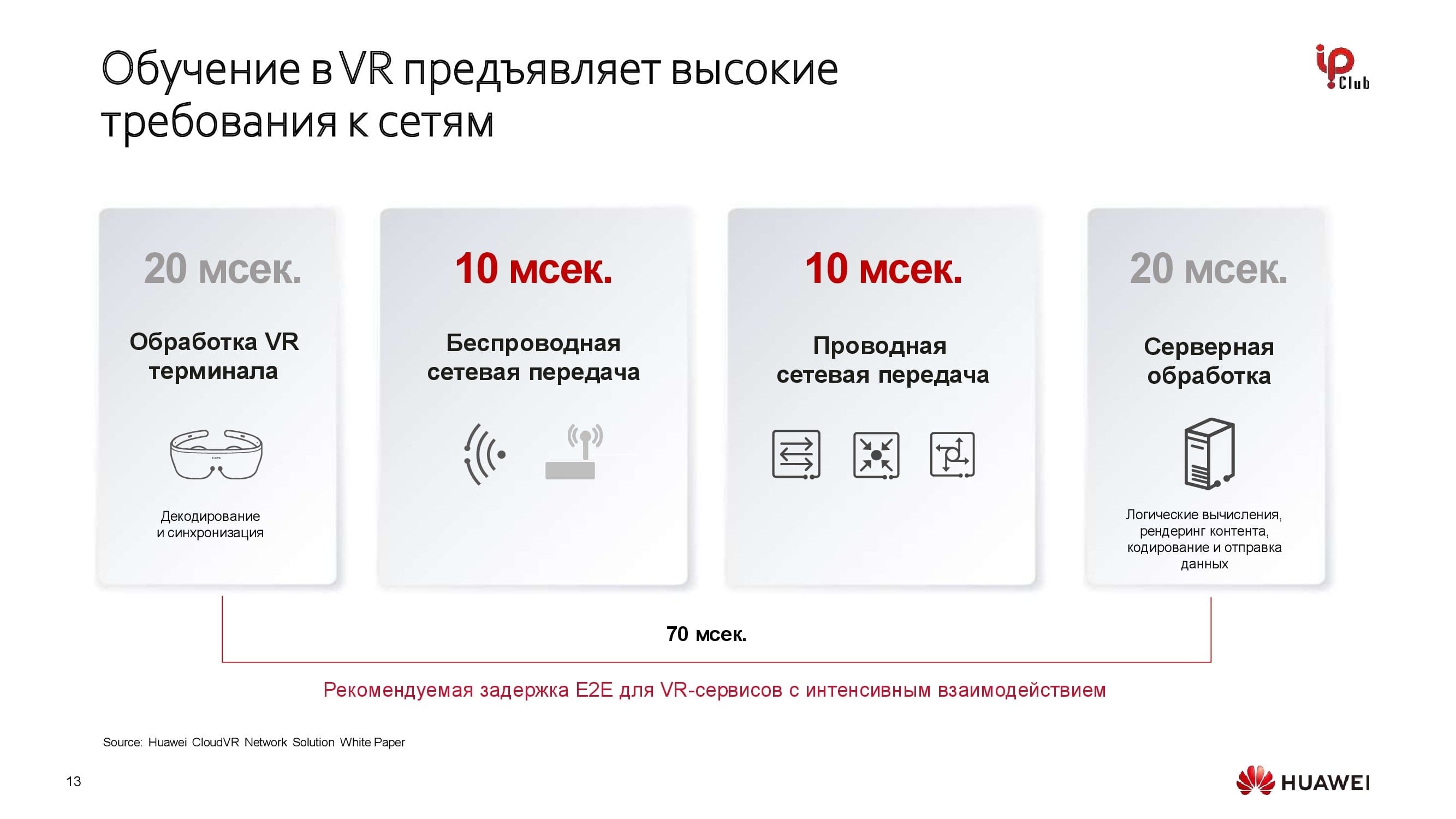
Let's take a closer look at network latency, which is critical for VR / AR. In applications where users interact intensively with the environment and with each other, it should not exceed the recommended value of 70 ms. Moreover, the terminal device needs about 20 ms to process the user's action, and the same amount is needed to form a new image in the data center. It turns out that no more than 30-40 ms are left for data transmission in both directions via wired and wireless networks. This is quite achievable if the wired network is correctly configured and demonstrates indicators close to the maximum possible (10 ms), and the wireless network is built on modern WiFi 6 technologies (10 ms).

Wi-Fi 6 for Operations Offices
The demands on campus networks are also growing for organizations in the financial sector, which, for example, often need to deploy a network of branches of a new format. Previously, a whole darkness of employees worked in bank branches or offices of insurance companies, queues for service were in the order of things, and any operation required a long live communication with the visitor, but soon all this will finally be a thing of the past.
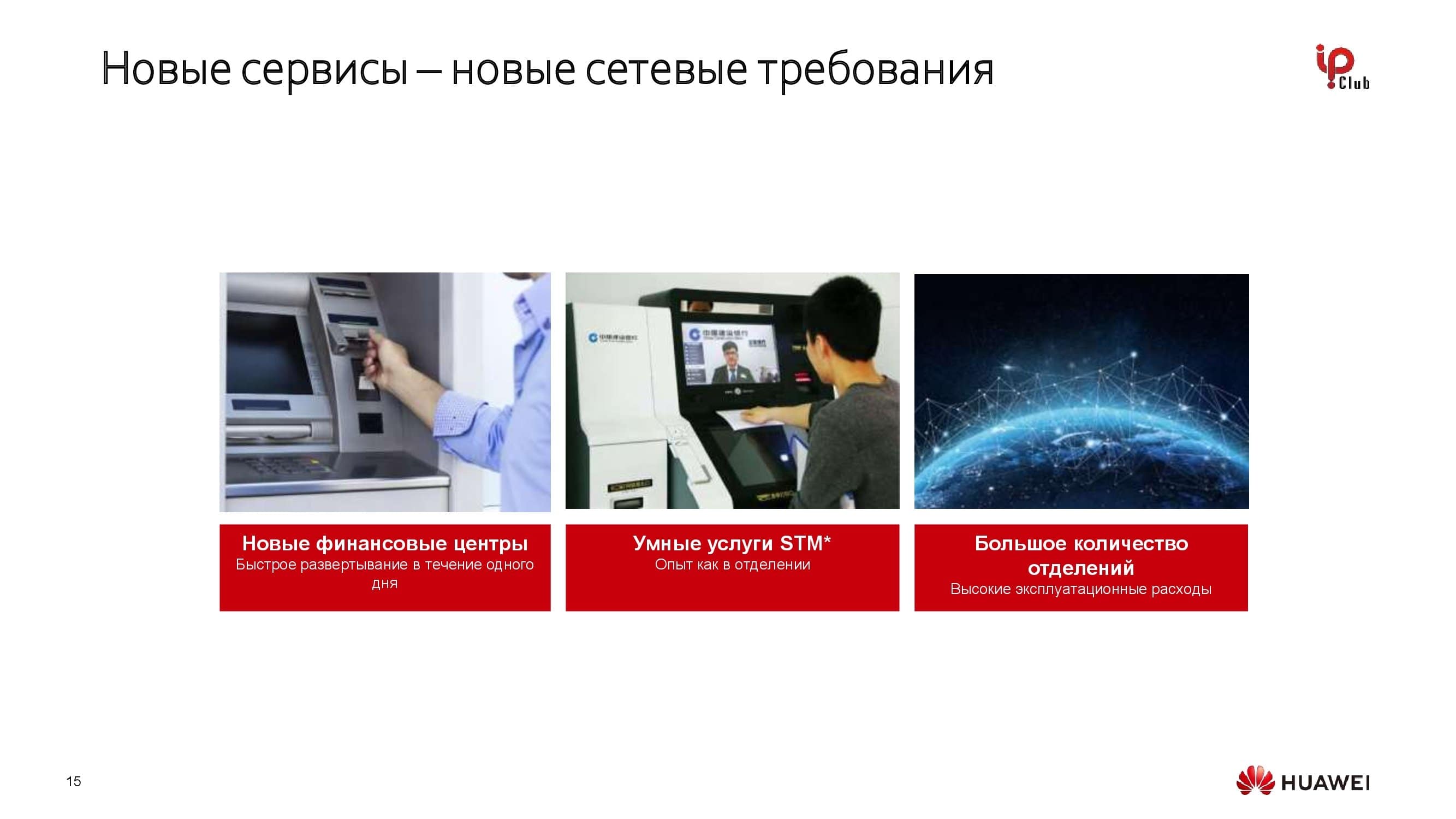
New offices require a minimal number of tellers, while the number of services provided by automated systems is growing and growing. Familiar ATMs coexist with much more functional "smart terminals" STM (Smart Teller Machine). With their help, you can get any service, whether it is the issuance of a plastic card or the execution of an agreement for opening an account. These devices are able to collect biometric data and scan documents, allow you to get advice from a remote specialist in the videoconference mode, etc.
To quickly and efficiently deploy a branch network with minimal operating costs - and even more so to create such branches in a mobile format - it is necessary to use wireless technologies that provide high connection speeds and low latencies.
Wireless technologies are also needed in large traditional offices with waiting areas for clients, electronic queue terminals, video surveillance systems, biometric controls, etc. Implementing all this using only wired solutions is expensive and time-consuming.
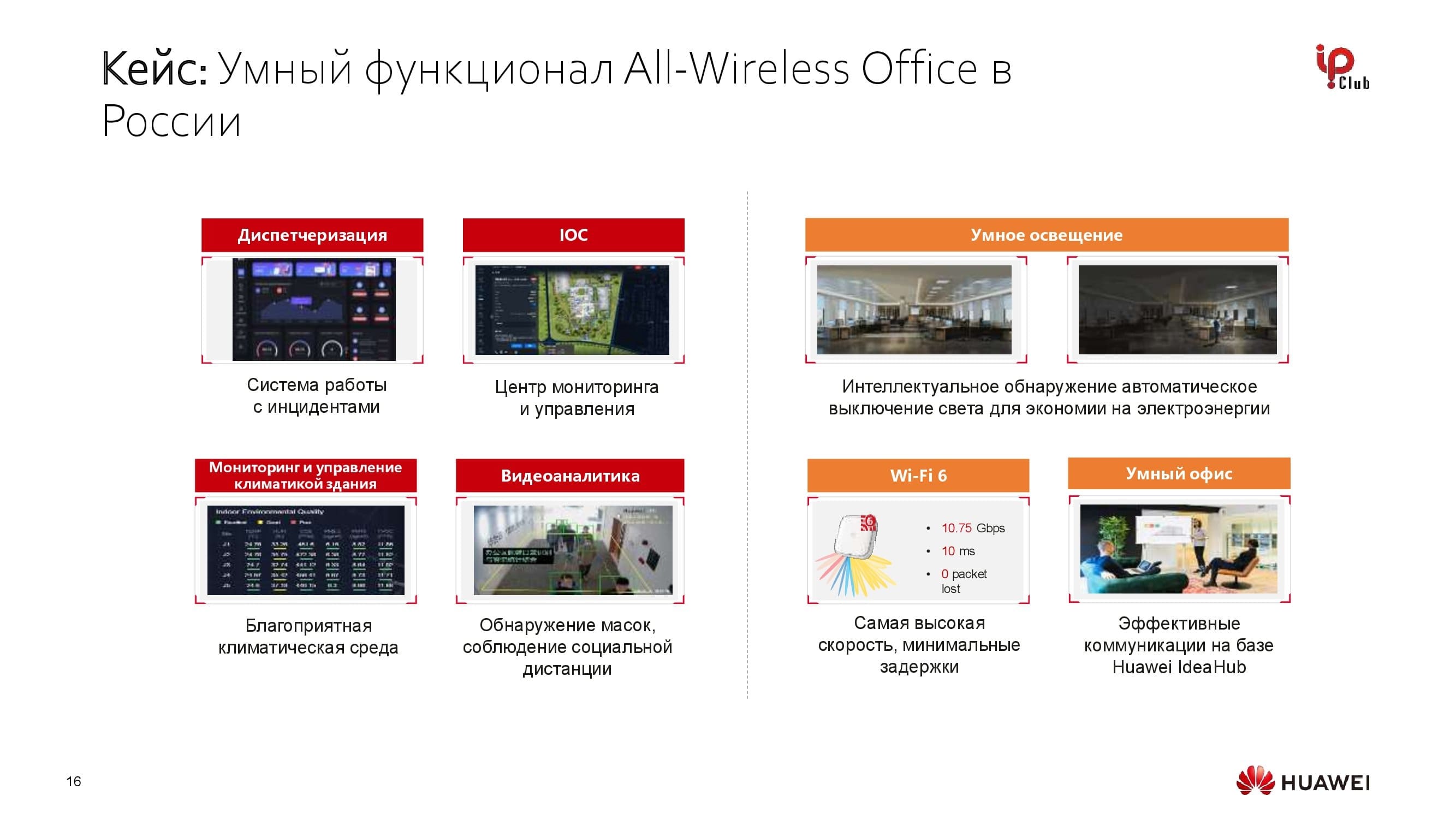
Here is a case from life. One of the largest companies in the Russian financial market, together with Huawei, implemented a project for a corporate educational institution, combined with a modern office and located in a separate multi-storey building.
The customer's task was to create a multifunctional workspace that meets all the new trends of all-wireless, with the ability to integrate previously existing and newly created IoT services.
With the direct participation of Huawei, a wired network was built, connecting the latest access points of the Wi-Fi 6 standard. And on the basis of the wireless infrastructure, a room air conditioning control system was deployed, plus the previously established video surveillance system was integrated with it (in addition to the latter, it was possible to deploy a video analytics system that allows you to automatically control the lighting in rooms).
The management of all these systems was integrated within the control room, which is also responsible for the operation of the building, fire safety, etc.

As a result, the customer built a modern training center and office, the functioning of which is organized with the widespread use of automation tools. Building maintenance now requires a minimum of staff. Where possible, the influence of the human factor on the processes is reduced or eliminated. At the same time, a comfortable environment for learning and work, a high level of security and, of course, full coverage of premises with high-speed wireless communication Wi-Fi 6 are provided.
***
Find out more about Wi-Fi 6 and Huawei technologies through our many webinars: here's their schedule for the coming months.